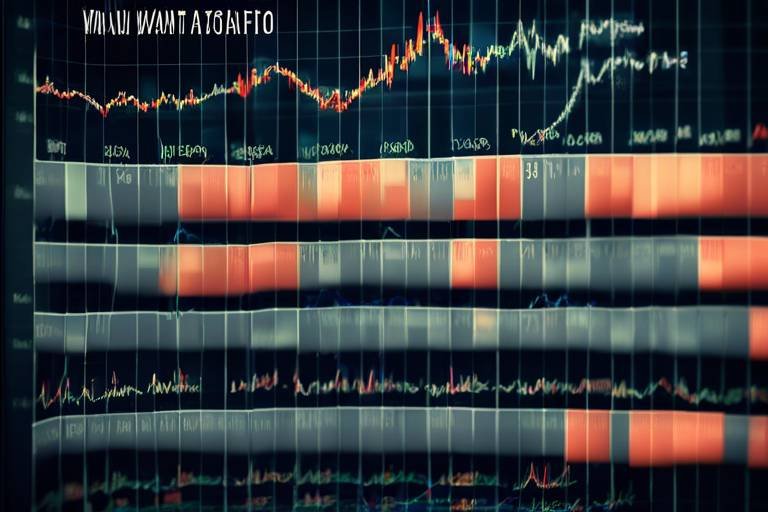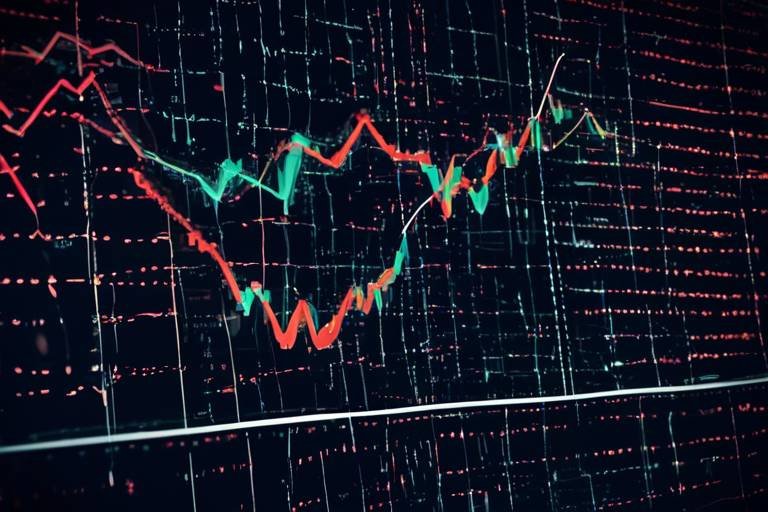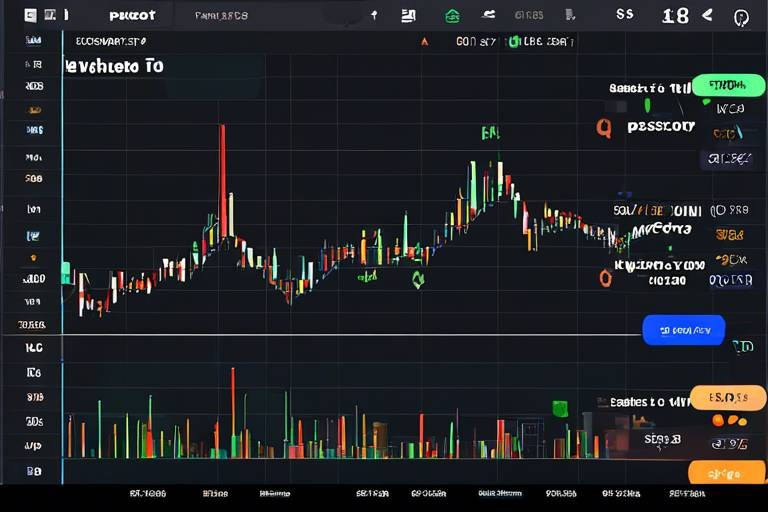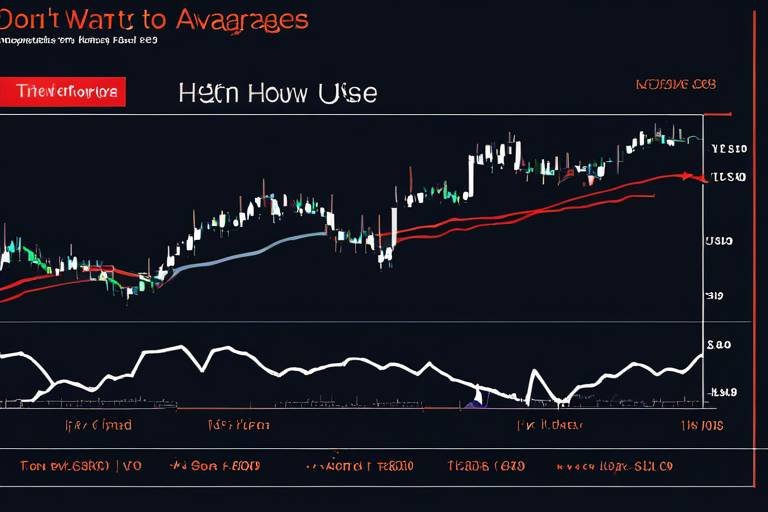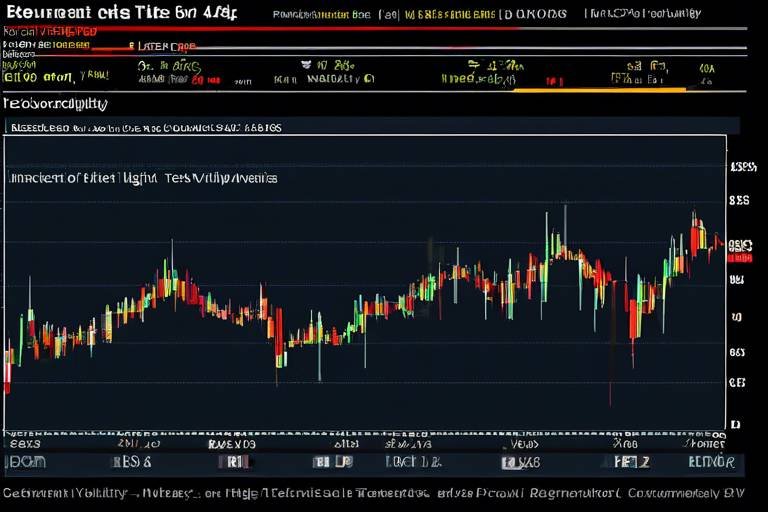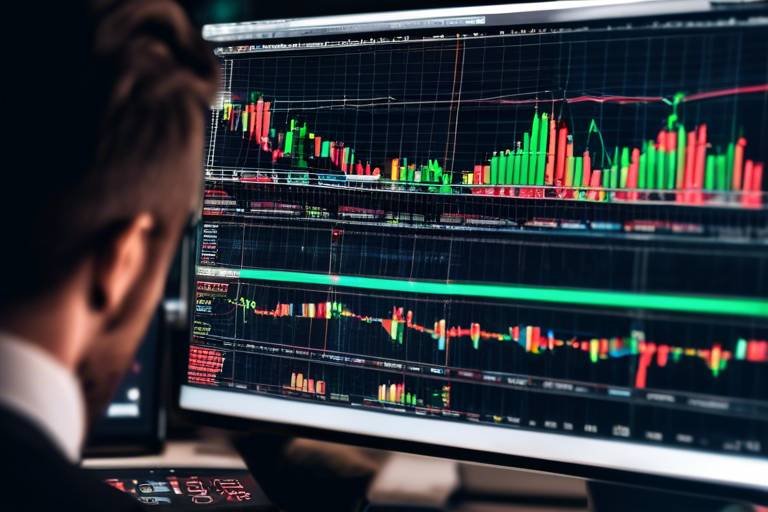Understanding the Significance of Volume in Trading Decisions
When diving into the world of trading, one concept that often gets thrown around is trading volume. But what does it really mean, and why is it so crucial for making informed trading decisions? Think of trading volume as the heartbeat of the market. Just like a doctor checks your pulse to gauge your health, traders look at volume to understand the market's vitality. In simple terms, trading volume refers to the total number of shares or contracts traded for a specific security during a given time period. This metric provides insights into market activity and liquidity, helping investors gauge how active a security is and whether there’s enough interest to support price movements.
Imagine walking into a bustling café where everyone is chatting and enjoying their coffee. The lively atmosphere gives you a sense of excitement, right? Now, picture that same café on a quiet Monday morning with just a few patrons. The energy is different, and so is the vibe. In trading, high volume indicates a bustling market where many buyers and sellers are actively participating, which can lead to more significant price movements. Conversely, low volume might suggest a lack of interest or uncertainty, making it harder to execute trades without impacting the price.
So, why should traders care about volume? For starters, it can help validate price trends. When prices are rising alongside increasing volume, it typically signals strong buyer interest and confidence in the trend. On the flip side, if prices are rising but volume is decreasing, it may imply that the rally lacks conviction, hinting at a potential reversal. This interplay between volume and price movements is not just a nice-to-know—it’s essential for making strategic trading decisions.
Moreover, volume can be a game-changer when identifying emerging trends. Picture yourself as a detective piecing together clues. Higher volumes during price increases suggest that buyers are eager to jump in, while high volumes during price declines indicate that sellers are in control. By recognizing these patterns, traders can position themselves to capitalize on market movements effectively. It’s like having a compass that guides you through the often-treacherous waters of trading.
Now, let’s talk about the tools traders use to analyze volume. Various technical indicators, such as On-Balance Volume (OBV) and Volume Moving Average, serve as essential instruments in a trader's toolbox. These indicators help traders analyze volume patterns over time, allowing for informed decisions based on historical data. Think of them as a magnifying glass that reveals hidden details about market dynamics, helping you see the bigger picture.
Another fascinating aspect of trading volume is the occurrence of volume spikes. These sudden surges in volume can signal significant market events or news releases, prompting traders to reassess their positions. Imagine you’re at a concert, and the crowd suddenly erupts in cheers. That spike in energy can indicate something exciting is happening, just like a volume spike can indicate a potential shift in market sentiment. Recognizing these spikes allows traders to react quickly, adjusting their strategies in response to heightened activity.
Understanding how volume behaves in different market conditions—whether bullish, bearish, or sideways—is also crucial. Just like a seasoned sailor adjusts their sails based on the wind's direction, traders must adapt their strategies to maximize potential profits and minimize risks. High volume in a bullish market suggests strong momentum, while high volume in a bearish market may indicate panic selling. By recognizing these patterns, traders can navigate the market more effectively.
In conclusion, volume is not just a number; it’s a critical component of trading that provides valuable insights into market dynamics. By understanding the significance of trading volume, traders can enhance their decision-making processes, leading to more informed and strategic trading outcomes.
- What is trading volume? Trading volume is the total number of shares or contracts traded for a specific security during a given time period.
- Why is volume important in trading? Volume helps validate price trends, indicates market sentiment, and can signal potential reversals or continuations.
- How can I analyze trading volume? Traders can use technical indicators like On-Balance Volume (OBV) and Volume Moving Average to analyze volume patterns.
- What does a volume spike indicate? A volume spike can indicate significant market events or news releases, prompting traders to reassess their positions.

The Concept of Trading Volume
Trading volume is a fundamental concept in the world of finance, acting as a barometer for market activity. Simply put, it refers to the total number of shares or contracts that are traded for a specific security during a defined time period. This metric not only reflects the liquidity of a security but also provides valuable insights into the overall health of the market. Imagine a bustling marketplace where the number of transactions indicates the level of interest; similarly, in trading, volume serves as a crucial indicator of market dynamics.
When we talk about trading volume, we're not just discussing numbers; we're delving into the psychology of the market. A high trading volume often signifies strong interest from investors, suggesting that there’s a consensus about the security's value. Conversely, low trading volume might indicate a lack of interest or uncertainty among traders. For instance, consider a stock that suddenly sees a spike in volume—this could be a signal that something significant is happening, prompting traders to take notice.
To illustrate this further, let’s break down the components of trading volume:
- Liquidity: Higher trading volumes typically mean better liquidity, which allows traders to enter and exit positions more easily.
- Market Sentiment: Volume can reflect the sentiment of the market; increasing volume during a price rise may indicate bullish sentiment, while high volume during a decline could suggest bearish trends.
- Volatility: Changes in volume can lead to increased volatility, as sudden spikes or drops may trigger reactions from traders and investors alike.
Understanding trading volume is essential for any trader looking to enhance their decision-making process. It’s not just about the price movement of a security; it’s about the story that the volume tells. For instance, if a stock is rising in price but accompanied by low volume, it may raise a red flag. Is there genuine interest in this price increase, or is it merely a fleeting moment? In contrast, a price increase with high volume can be a strong signal that the trend is likely to continue.
In conclusion, trading volume is more than just a statistic; it’s a vital tool that traders utilize to gauge market activity, sentiment, and potential price movements. By paying close attention to volume, traders can make more informed decisions, adapt their strategies, and ultimately navigate the complex landscape of financial markets with greater confidence.

Volume and Price Relationship
The relationship between volume and price movements is one of the most critical aspects of trading that every investor should understand. Imagine you're at a concert, and the crowd's energy is palpable; the louder the cheers, the more exciting the show becomes. Similarly, in the world of trading, when volume increases, it often signifies strong investor interest and can validate price trends. For instance, if a stock's price is rising and the trading volume is also increasing, it suggests that many traders are buying into the stock, reinforcing the upward trend. This synergy can be a powerful indicator of market sentiment.
On the flip side, if you see a price increase accompanied by decreasing volume, it could be a warning sign. It’s like a band playing their final encore with only a handful of fans left cheering. This scenario may indicate a lack of conviction among investors, suggesting that the price increase might not be sustainable. Traders often keep a close eye on these dynamics to gauge whether a price movement is likely to continue or reverse.
To illustrate this relationship, consider the following table that summarizes key scenarios:
| Price Movement | Volume Trend | Market Implication |
|---|---|---|
| Price Increasing | Increasing Volume | Strong bullish sentiment; trend likely to continue |
| Price Increasing | Decreasing Volume | Weak bullish sentiment; potential reversal |
| Price Decreasing | Increasing Volume | Strong bearish sentiment; trend likely to continue |
| Price Decreasing | Decreasing Volume | Weak bearish sentiment; potential reversal |
Understanding these dynamics helps traders make more informed decisions. It’s not just about following the price; it’s about reading the market’s pulse through volume. When you see high trading volumes during price increases, it's like the market is throwing a party, and everyone wants in. Conversely, low volume during a price increase can feel like a party where the guests are slowly leaving, hinting that the excitement might be fading.
In conclusion, the interplay between volume and price is a crucial element of trading strategy. By paying attention to how these two factors relate, traders can better anticipate market movements and make decisions that align with the sentiment of the market. So, the next time you're analyzing a stock, remember to ask yourself: what is the volume telling me? This insight could be the key to unlocking greater trading success.
- What does high trading volume indicate? High trading volume typically indicates strong interest in a security, suggesting that price movements are more likely to continue in the same direction.
- Can low volume be a warning sign? Yes, low volume during price movements can signal a lack of conviction, potentially indicating that a reversal may occur.
- How do I analyze volume trends? Traders often use volume indicators, such as On-Balance Volume (OBV) and Volume Moving Averages, to assess trends and make informed decisions.

Identifying Trends with Volume
When it comes to trading, understanding how to identify trends using volume can be a game changer. Think of trading volume as the heartbeat of the market; it tells you how alive and active a particular security is at any given moment. When you see higher volumes during a price increase, it’s like a loud cheer from the crowd, indicating that there’s strong buyer interest. This scenario often suggests that the upward trend is likely to continue. Conversely, if there’s high volume during a price decline, it’s akin to a warning bell, signaling that sellers are in control and the market sentiment might be shifting.
To put it simply, volume acts as a confirmation tool for price movements. For instance, if a stock price is climbing but the volume is low, you might want to exercise caution. It could mean that the rally lacks conviction, and a reversal might be on the horizon. On the other hand, a price increase accompanied by a surge in volume typically indicates robust demand, which can lead to further price appreciation. This relationship between volume and price is crucial for traders looking to make informed decisions.
Moreover, recognizing volume trends can help you spot potential reversals or continuations in the market. For example, if you observe a consistent pattern where volume increases as prices rise, you can be more confident that the trend is strong. Here’s a quick breakdown:
- Rising Price + Rising Volume: Strong bullish trend.
- Rising Price + Falling Volume: Potential reversal or weakening trend.
- Falling Price + Rising Volume: Strong bearish trend.
- Falling Price + Falling Volume: Potential reversal or weakening trend.
In essence, volume is not just a number; it’s a critical indicator that provides context for price movements. By paying close attention to volume patterns, traders can enhance their ability to make strategic decisions. Whether you’re a seasoned trader or just starting out, integrating volume analysis into your trading strategy can significantly improve your chances of success.
Q: How can I track volume for a specific stock?
A: Most trading platforms provide volume data as part of their charts. You can also find volume information on financial news websites and stock market apps.
Q: What does it mean if a stock has high volume but the price is stable?
A: High volume with stable prices might indicate that investors are accumulating shares, which could lead to a price increase in the future.
Q: Is volume analysis applicable to all types of trading?
A: Yes, volume analysis is relevant for various trading styles, including day trading, swing trading, and long-term investing.

Volume Indicators
When diving into the world of trading, understanding is like having a secret weapon in your arsenal. These indicators offer traders a way to analyze market activity and make informed decisions based on the flow of shares or contracts traded. One of the most popular volume indicators is the On-Balance Volume (OBV), which combines price and volume to provide insights into the strength of a trend. Essentially, OBV adds volume on up days and subtracts it on down days, helping traders gauge whether a security is being accumulated or distributed.
Another essential tool is the Volume Moving Average. This indicator smooths out volume spikes over a specific period, allowing traders to identify whether the current volume is above or below the average. If the current volume is significantly higher than the moving average, it could signal strong interest in the stock, potentially leading to price changes. Conversely, if the volume is lower, it might indicate a lack of conviction among traders.
To illustrate the importance of these indicators, let’s consider a hypothetical scenario. Imagine a stock that has been steadily climbing in price. As a trader, you notice that the OBV is also trending upwards, confirming that the rise in price is supported by strong buying interest. However, if you see a sudden drop in OBV at the same time the stock price is climbing, it may raise a red flag, suggesting that the price increase could be unsustainable. This is where volume indicators shine—they help you see beyond the price action and understand the underlying market dynamics.
Volume indicators can also highlight potential reversals. For example, if a stock has been in a downtrend but suddenly experiences a spike in volume, it may indicate that buyers are stepping in, potentially signaling a reversal. Traders often look for such volume spikes as confirmation of a change in trend, making volume indicators invaluable for strategic planning.
In summary, volume indicators are crucial for any trader looking to enhance their decision-making processes. They provide context to price movements, help identify trends, and reveal market sentiment. By incorporating volume indicators into your trading strategy, you can make more informed decisions and increase your chances of success in the ever-fluctuating financial markets.
- What is the significance of trading volume? Trading volume indicates the level of activity and liquidity in the market, providing insights into price movements and market sentiment.
- How do volume indicators enhance trading strategies? Volume indicators help traders confirm trends, identify potential reversals, and gauge market sentiment, leading to more informed trading decisions.
- What are some common volume indicators? Common volume indicators include On-Balance Volume (OBV), Volume Moving Average, and the Accumulation/Distribution line.
- Can volume indicators predict market movements? While they can provide valuable insights into potential movements, volume indicators should be used in conjunction with other analysis tools for the best results.

Volume Spikes
When we talk about , we're diving into one of the most thrilling aspects of trading. Imagine you're at a concert, and the crowd suddenly erupts into cheers. That surge of energy is akin to a volume spike in the market. It signals that something significant is happening, and traders need to pay attention. A volume spike occurs when the number of shares or contracts traded in a specific time frame suddenly increases dramatically compared to the average volume. This spike can be triggered by various factors, including major news releases, earnings reports, or unexpected market events.
For traders, recognizing these spikes can be a game-changer. They often indicate a shift in market sentiment, prompting a reassessment of current positions. For instance, if a stock has been trading steadily and suddenly experiences a volume spike, it could suggest that a new trend is emerging. This is where the excitement lies—understanding the implications of these spikes can help traders make informed decisions.
To put this into perspective, let's consider a hypothetical scenario. Suppose a tech company announces a groundbreaking product. Traders who had been watching the stock closely might see a sudden surge in volume as investors rush to buy shares, anticipating a price increase. This spike not only validates the bullish sentiment but also serves as a signal for other traders to consider entering the market. Conversely, a sudden spike in selling volume might indicate panic or a reaction to negative news, signaling traders to evaluate their strategies carefully.
It's essential to analyze the context of these volume spikes. Not every spike is created equal. Traders often look for confirmation of the spike through price movement. If a volume spike coincides with a price increase, it often indicates strong interest and confidence in the asset. On the other hand, if the price drops despite a volume spike, it might suggest a lack of conviction among buyers or even a potential reversal.
Moreover, traders can use various tools and indicators to help interpret volume spikes. For example, the On-Balance Volume (OBV) indicator can provide insights into whether volume is supporting the price trend. A rising OBV with a price increase suggests that buyers are in control, while a declining OBV can be a warning sign of weakening momentum.
In summary, volume spikes are critical signals that can provide valuable insights into market dynamics. They are like flashing lights that alert traders to potential opportunities or risks. By paying close attention to these spikes and analyzing their implications, traders can enhance their decision-making processes and navigate the ever-changing landscape of financial markets more effectively.
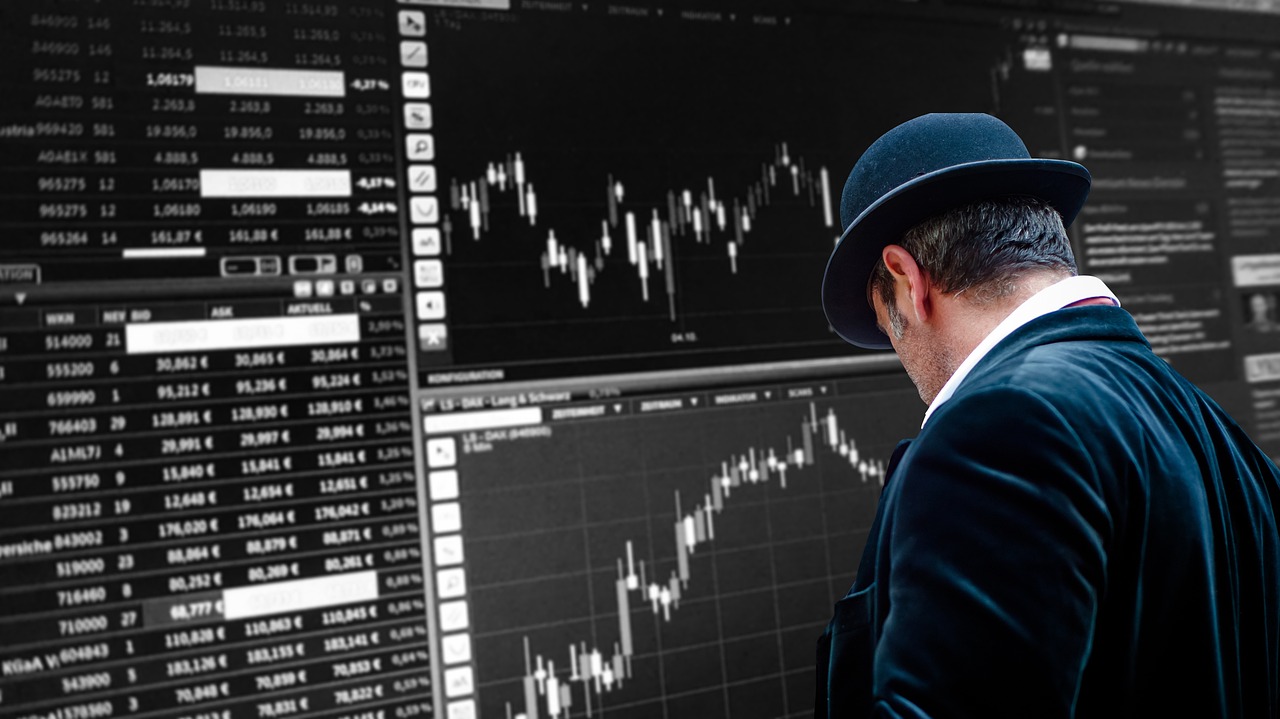
Volume in Different Market Conditions
Understanding how trading volume behaves in various market conditions is essential for any trader looking to enhance their decision-making process. Whether the market is bullish, bearish, or moving sideways, the volume can provide critical insights that help traders adapt their strategies. In a bullish market, for instance, you often see increased trading volume accompanying price increases. This surge in volume typically indicates strong buyer interest, suggesting that the upward price movement is supported by solid market enthusiasm. Imagine a crowded concert where everyone is cheering; the louder the crowd, the more energy the performers put into their show, which can be likened to how volume supports price increases in a bullish trend.
Conversely, during a bearish market, the dynamics shift significantly. High trading volume in this scenario often accompanies price declines, signaling that sellers are dominating the market. It's akin to a stampede—when the herd decides to run, you can expect a rush of activity as people try to exit quickly. This high volume during downturns can indicate panic selling, which may lead to further price drops. Therefore, recognizing these patterns can help traders make informed decisions about when to enter or exit positions.
When the market is moving sideways, or in a consolidation phase, trading volume often decreases. This reduced activity can indicate a lack of conviction among traders regarding the direction of the market. Picture a tug-of-war where neither side is gaining ground; the tension is palpable, but the lack of movement signifies uncertainty. In such conditions, low volume can be a warning sign that the market may be gearing up for a breakout, either up or down. Traders should be on alert for any sudden increases in volume, as these can precede significant price movements.
To illustrate how volume interacts with different market conditions, consider the following table:
| Market Condition | Volume Behavior | Implications for Traders |
|---|---|---|
| Bullish | High volume on price increases | Strong buyer interest; consider entering long positions |
| Bearish | High volume on price declines | Strong seller interest; consider exiting or shorting |
| Sideways | Low volume with potential spikes | Indicates uncertainty; watch for breakout opportunities |
In summary, recognizing the relationship between volume and market conditions is crucial for traders. By analyzing volume trends, they can gauge market sentiment and tailor their strategies accordingly. Whether it’s riding the wave of a bullish trend or navigating the choppy waters of a bearish market, understanding volume can significantly enhance a trader's ability to make informed decisions.
- What does high trading volume indicate? High trading volume generally indicates strong interest in a security, suggesting that price movements are supported by significant buying or selling activity.
- How can I use volume to improve my trading strategy? By analyzing volume trends, you can identify potential market reversals, confirm price movements, and adjust your trading strategy based on market sentiment.
- What are volume spikes, and why are they important? Volume spikes are sudden increases in trading activity that often coincide with major news events or market shifts, signaling traders to reassess their positions.

The Role of Volume in Technical Analysis
When it comes to technical analysis, volume is not just an afterthought; it’s a crucial element that can significantly influence trading decisions. Think of volume as the heartbeat of the market. Just as a doctor checks your pulse to gauge your health, traders analyze volume to understand the vitality of price movements. Without considering volume, you might as well be flying blind in the financial markets.
Volume provides essential context for price movements. It helps traders discern whether a price change is backed by strong interest or if it’s merely a fleeting moment of excitement. For instance, when a stock price rises but volume remains low, it might indicate that the rally is weak and could soon reverse. Conversely, if a price increase is accompanied by high volume, it suggests robust buyer interest, signaling that the trend is likely to continue. This interplay between volume and price is what makes technical analysis so powerful.
Moreover, volume plays a vital role in confirming or challenging trading signals. Traders often look for volume patterns to validate their strategies. For example, during a breakout—where the price moves above a resistance level—high volume can confirm that the breakout is legitimate. On the other hand, if the breakout occurs on low volume, it raises a red flag, suggesting that the move might not be sustainable. This is where indicators like the On-Balance Volume (OBV) come into play, helping traders make sense of the volume data in relation to price trends.
Another interesting aspect of volume in technical analysis is its ability to reveal market sentiment. High trading volumes during price increases generally indicate a bullish sentiment, reflecting optimism among traders. Conversely, high volumes during price declines often reflect a bearish sentiment, indicating widespread selling. Understanding these sentiments can help traders align their strategies with the prevailing market mood, enhancing their chances of success.
To illustrate the importance of volume in technical analysis, consider the following table that outlines how different volume levels can influence trading decisions:
| Volume Level | Market Implication | Trading Action |
|---|---|---|
| High Volume with Price Increase | Strong bullish signal | Consider buying or holding |
| High Volume with Price Decrease | Strong bearish signal | Consider selling or shorting |
| Low Volume with Price Increase | Weak bullish signal | Exercise caution |
| Low Volume with Price Decrease | Weak bearish signal | Exercise caution |
In essence, volume is a fundamental aspect of technical analysis that no trader should overlook. It offers insights into market dynamics, helps confirm trading signals, and reflects market sentiment, all of which are vital for making informed trading decisions. By integrating volume analysis into your trading strategy, you can enhance your ability to navigate the often tumultuous waters of the financial markets.
- What is trading volume?
Trading volume refers to the total number of shares or contracts traded for a specific security during a given time period.
- How does volume affect price movements?
Increasing volume often validates price trends, while decreasing volume may signal potential reversals or lack of conviction in the market.
- What are some common volume indicators?
Common volume indicators include On-Balance Volume (OBV), Volume Moving Average, and Accumulation/Distribution Line.
- Why is volume important in technical analysis?
Volume helps confirm price movements, reveals market sentiment, and aids in identifying potential trend reversals.

Volume Patterns
When it comes to trading, understanding is like having a secret map guiding you through the treacherous waters of the financial markets. Just as a sailor relies on the stars to navigate, traders depend on volume patterns to decipher the underlying dynamics of price movements. These patterns can reveal a lot about market psychology, helping you make more informed decisions. So, what exactly are these volume patterns?
Volume patterns can generally be categorized into two main types: accumulation and distribution. Accumulation occurs when there is a significant increase in volume while prices are generally stable or rising slowly. This often indicates that smart money is buying in, suggesting a potential bullish trend. On the flip side, distribution happens when high volume coincides with a price decline, indicating that traders are selling off their positions, which could signal a bearish trend.
Let’s break down these patterns a bit further:
- Accumulation Phase: This phase is characterized by high volume as prices stabilize or rise slightly. It often precedes a significant upward price movement.
- Distribution Phase: Here, high volume is observed during price declines, suggesting that traders are offloading their assets, which could lead to a downturn.
Another crucial volume pattern to recognize is the volume breakout. This occurs when the price breaks through a significant support or resistance level accompanied by a surge in volume. Such a breakout is often seen as a strong signal that the price will continue in the direction of the breakout. For example, if a stock breaks above a resistance level with high volume, it may indicate that buyers are stepping in, pushing the price higher.
To visualize these patterns, consider the following table that outlines typical volume patterns and their implications:
| Volume Pattern | Description | Implication |
|---|---|---|
| Accumulation | High volume during price stability or slight increases | Potential bullish trend ahead |
| Distribution | High volume during price declines | Potential bearish trend ahead |
| Volume Breakout | Price breaks through support/resistance with high volume | Strong signal for price continuation |
Recognizing these patterns can significantly enhance your trading strategy. They provide critical insights into the market’s current sentiment and can help you anticipate price movements. For instance, if you notice a consistent accumulation pattern over several days, it might be wise to consider entering a position before the price surges. Conversely, if you see distribution occurring, it could be a signal to tighten your stop-loss orders or even exit a position to safeguard your profits.
In summary, volume patterns are invaluable tools in a trader's arsenal. By learning to identify and interpret these patterns, you can gain a deeper understanding of market dynamics, allowing you to make more strategic trading decisions. Just remember, while volume patterns provide significant insights, they should always be considered alongside other technical indicators and market factors to form a comprehensive trading strategy.
- What is the significance of volume in trading? Volume indicates the level of activity and liquidity in a market, helping traders gauge price movements and market sentiment.
- How can I identify accumulation and distribution phases? Look for high trading volumes during price stability or declines; accumulation shows strong buying interest, while distribution indicates selling pressure.
- What is a volume breakout? A volume breakout occurs when a price breaks through a key level of support or resistance, accompanied by a surge in volume, indicating a potential continuation of the trend.
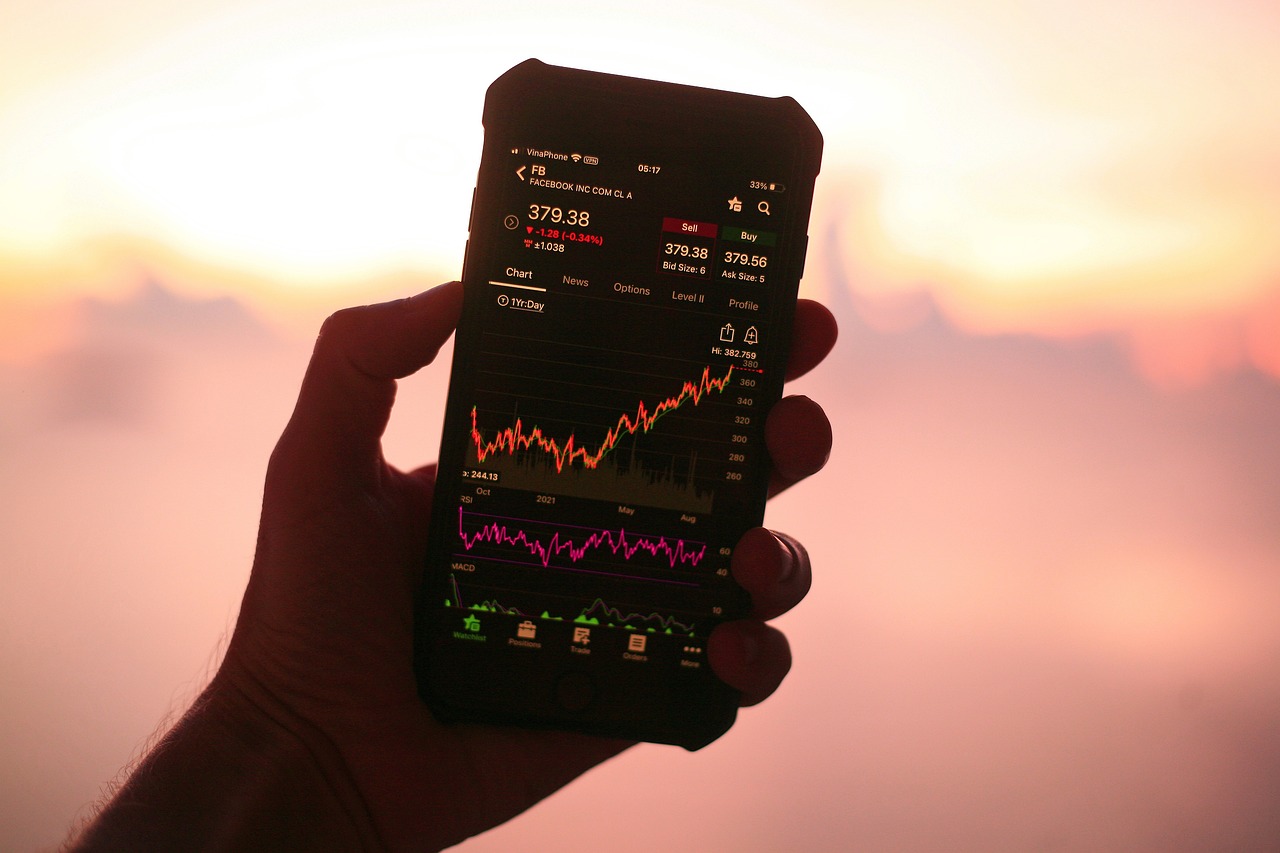
Volume and Market Sentiment
When it comes to understanding market sentiment, trading volume serves as a powerful indicator that can reveal the mood of investors. Imagine walking into a crowded room where everyone is buzzing with excitement; that buzz is akin to high trading volume during a price rally, signaling a strong bullish sentiment. Conversely, if you find yourself in a quiet room with only a few murmurs, it reflects low trading volume during a price decline, indicating a bearish outlook. This relationship between trading volume and market sentiment is crucial for traders who want to make informed decisions.
High trading volume during an upward price movement often suggests that many investors are jumping on the bandwagon, which can reinforce the price trend. Traders might see this as a confirmation signal to enter or add to their positions. On the other hand, if a price increase occurs with low volume, it raises a red flag. It may indicate that the rally lacks conviction, and traders should tread carefully. This is where the concept of divergence comes into play; when price movements and volume trends do not align, it can signal potential reversals.
For example, consider a scenario where a stock price rises significantly, but the trading volume remains stagnant. This situation could suggest that the upward movement is not backed by strong buyer interest, leading traders to question the sustainability of the trend. In contrast, a price drop accompanied by high volume usually indicates strong selling pressure, reinforcing the bearish sentiment and prompting traders to consider short positions or exit their long positions.
To further illustrate this connection, let’s take a look at a simple table that outlines the relationship between volume and market sentiment:
| Volume Level | Price Movement | Market Sentiment |
|---|---|---|
| High | Increasing | Bullish |
| High | Decreasing | Bearish |
| Low | Increasing | Questionable |
| Low | Decreasing | Indifferent |
In addition to these indicators, traders also pay attention to volume during key market events, such as earnings reports or economic announcements. A sudden spike in volume during these times can signify that investors are reacting to new information, which can lead to rapid price movements. Understanding this dynamic allows traders to adjust their strategies accordingly. For instance, if they notice a surge in volume during a positive earnings report, they may decide to enter a position, anticipating further price increases.
Ultimately, recognizing how volume correlates with market sentiment can give traders a significant edge. It allows them to gauge whether the prevailing sentiment is strong enough to continue driving prices in a particular direction or if a reversal might be on the horizon. By integrating volume analysis into their trading strategies, investors can enhance their decision-making processes and improve their chances of success in the ever-volatile financial markets.
- What is trading volume? Trading volume refers to the total number of shares or contracts traded for a specific security during a given time period.
- How does volume affect price movements? Increasing volume often validates price trends, while decreasing volume may signal potential reversals.
- What are volume indicators? Volume indicators, such as On-Balance Volume (OBV) and Volume Moving Average, help traders analyze volume patterns.
- Why is understanding volume important? Understanding volume is crucial for confirming market trends, assessing market sentiment, and making informed trading decisions.
Frequently Asked Questions
- What is trading volume?
Trading volume is the total number of shares or contracts traded for a specific security within a certain timeframe. It serves as a key indicator of market activity and liquidity, helping traders gauge how actively a security is being bought and sold.
- How does volume impact price movements?
Volume plays a crucial role in price movements; typically, increasing volume validates price trends, suggesting strong market interest. Conversely, decreasing volume may indicate potential reversals or a lack of conviction among traders, signaling that the current trend may not be sustainable.
- What are volume indicators?
Volume indicators, such as On-Balance Volume (OBV) and Volume Moving Average, are technical tools that help traders analyze volume patterns. These indicators provide insights into the strength of price movements and assist in making informed trading decisions based on historical volume data.
- What does a volume spike indicate?
A sudden spike in trading volume often signals significant market events or news releases. Such activity can prompt traders to reassess their positions and strategies, as heightened volume typically reflects increased interest and potential volatility in the market.
- How does volume behave in different market conditions?
Volume can behave differently in various market conditions. In bullish markets, high volume during price increases suggests strong buyer interest, while in bearish markets, high volume during declines indicates selling pressure. Understanding these patterns helps traders adapt their strategies to maximize profits and minimize risks.
- Why is volume important in technical analysis?
Volume is a fundamental component of technical analysis as it provides essential context for price movements. By analyzing volume, traders can confirm or challenge their trading signals, enhancing their decision-making processes and improving their chances of success in the market.
- What are volume patterns and why are they significant?
Volume patterns, such as accumulation and distribution phases, offer insights into potential market reversals or continuations. Recognizing these patterns helps traders plan their strategies more effectively, allowing them to make informed decisions based on market behavior.
- How does volume reflect market sentiment?
Volume often mirrors the overall sentiment in the market. For instance, high volumes during rallies indicate bullish sentiment among traders, while high volumes during declines suggest a bearish outlook. This information can significantly influence trader psychology and decision-making.







